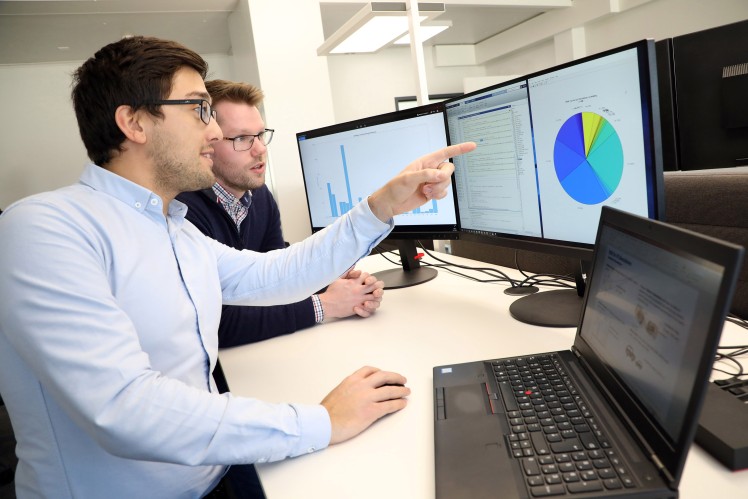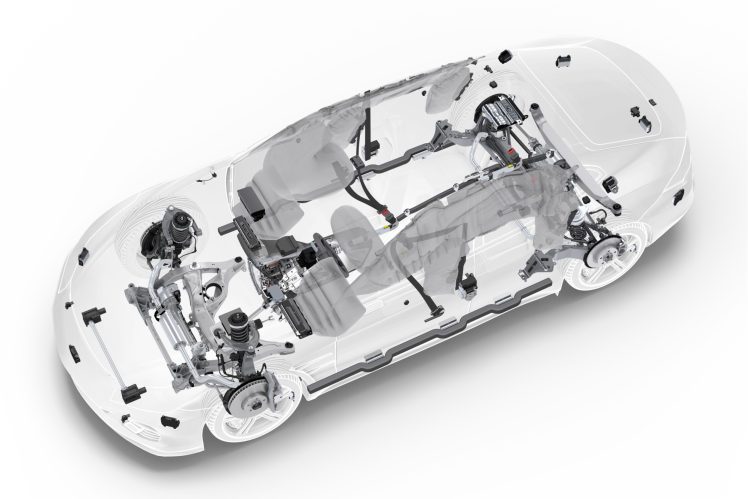Starting from mid-2022, new advanced safety technologies have been made successively mandatory for all new vehicles sold in the EU market, including lane departure warning, driver drowsiness recognition and advanced emergency braking systems. The revision of the GSR was adopted in December 2019 and integrated to the European type approval framework. The purpose of the regulation is to reduce the number of road casualties, including a focus on vulnerable road users (cyclist, pedestrians).

Integrated Safety
Definition: What is Integrated Vehicle Safety?
Integrated vehicle safety connects active and passive safety technology. Improving integrated vehicle safety goes hand in hand with the development of autonomous and automated driving. Integrated safety enhances comfort, convenience and driver support with easy-to-use assistance systems and functions like health monitoring of the vehicle occupants. These technologies can help assist in critical driving situations and in protecting occupants.
Active Safety Technology
Avoiding Accidents
The most significant contribution to future road safety may be autonomous and automated driving, since studies indicate human error has been responsible for almost 90 percent of accidents to date. Already today, assistance systems can support the driver in emergency braking or evasive maneuvers and help prevent accidents. This makes them part of active safety technology.
More powerful sensors have the ability to detect potential dangers on global roadways even earlier and make active safety in critical driving situations more effective by intervening in braking or steering.
The “Automated Front Collision Avoidance” assistance function is capable of sensing the vehicle environment to determine if commanding an automatic lane change is necessary to help avoid an accident if the driver fails to react in time.
Passive Safety Technology
Reducing Crash Impacts
If a crash is unavoidable, passive safety technology can help to reduce the consequences of the accident for the occupants and other road users. Working as a coordinated system in modern cars are seat belts and airbags. The seat belts help to keep the occupant in the correct seating position and the airbag forms a life-saving buffer between the driver and the steering wheel, for example.
ZF is a Leading Developer and Manufacturer of Seat Belt, Steering Wheel and Airbag Technologies:
Before the crash
Just before an unavoidable accident - in the so-called pre-crash phase - seat belts can be tightened, for example, or an external airbag can be positioned as an additional crumple zone. This makes passive safety even more effective.
One example is the ZF Pre-crash safety system utilizing an external side airbag.
Legislation and Consumer Protection Ratings
Vehicle Safety Drivers
In addition to technology trends such as autonomous and automated driving and electric mobility, legislation, consumer protection ratings and new findings from accident research influence the further development of vehicle safety.
Legislation
The National Highway Traffic Safety Administration is responsible in-part for evaluating safety on America’s roadways. Through enforcing vehicle performance standards and partnerships with state and local governments, NHTSA aims to help reduce deaths, injuries and economic losses from motor vehicle crashes.
New Car Assessment Program (NCAP)
The Global New Car Assessment Programme (Global NCAP) is a major project of the Towards Zero Foundation working to improve vehicle safety in all regions of the world.
Euro NCAP has created the five-star safety rating system to help consumers compare vehicles more easily and to help them identify the safety features to meet their needs.
The United States New Car Assessment Program (U.S. NCAP) is a consumer information and new car test protocol program of the U.S. Department of Transportation’s National Highway Traffic Safety Administration (NHTSA).
Accident Research
As one of the leading manufacturers in the field of safety technology, ZF is intensively involved in accident research and crash testing component performance.











